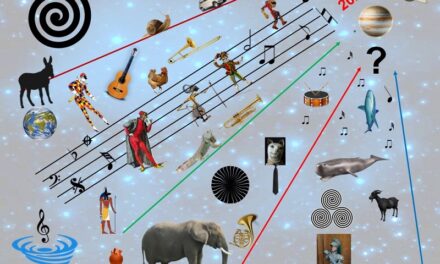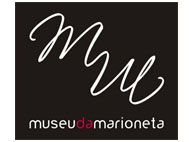This article – written in collaboration with UNIMA Catalonia – aims to create an initial, general outline of what could be considered as the Puppetry Heritage of Catalonia. This first approach to a rich and complex subject will be expanded as new material on the subject reaches us. If our point of departure is the concept of heritage, and if we take the word in the sense of an inheritance from our predecessors, then our study should focus on what has been preserved from the world of puppetry, prior to current generations of puppeteers.

Three Pericos. Puppets by the Anglès family. Collection of the Museu de les Arts Escèniques MAE.
We must obviously clarify the range of our definition of Puppets. For us, a puppet is any figure manipulated by a person in order to give it the appearance of being alive. This broad idea covers not only animation that takes place on a stage, whether indoors or outside, but also that which occurs in streets and town squares, often in procession from one place to another and sometimes during traditional festivals and local ‘fiestas’. This meaning includes giants, Catalan ‘big heads’, dragons and other animals, some of which even spit fire.

Giants of the Pi neighbourhood of Barcelona, Big head Cucut, and Sol Solet of Els Comediants. From the Exhibition ‘Figures of Doubleness’.
Luckily for us, these figures that parade through squares and streets, especially those worked by amateur groups, have been well studied and classified, given the enormous support and encouragement they have received in the last few decades in Catalonia, where the development of Giants and festival creatures has been extraordinary, whether considered from a European or world-wide perspective.
The Department of Culture of the Generalitat of Catalonia has a section dedicated to Festive Heritage directed by Jan Grau i Martí. Anthropologist and historian, Jan Grau i Martí is undertaking impressive research and is classifying Catalonia’s different festive traditions. One only needs to look at the web page www.festes.org, set up by Manel Carrera on behalf of Rebombori Digital, to appreciate the scale of work that has been done on this subject; this association itself and the Generalitat’s Department of Culture aim to encourage the publication of books while, at the same time, collaborating with the country’s public and private institutions in order to protect, classify and exhibit all that can be considered Festive Heritage. An example of this is the marvellous catalogue of hundred-year-old giants produced, precisely, by the Generalitat’s Department of Culture. Published in 2015 and coordinated by Luis Ardèvol i Julián, the Catàleg de Gegants Centenaris de Catalunya gives a systematic, erudite and illustrated account of the sixty pairs of giants in Catalonia considered to be a hundred years old or more.

Catalan Puppet. Pieces by the Vergés and Anglès families. Museu de les Arts Escèniques (MAE) collection. Exhibition “Figures of Doubleness”.
The strict field of puppets – a word understood as figures which are hand-worked by puppeteers who can be considered professional, and involving performances in a puppet-theatre or on a stage – has not, in contrast, been so thoroughly studied, nor can it boast catalogues of such quality. Belonging to the ambit of “minor culture” and, for the most part, located on a floor below that of Actors’ Theatre, puppets have been paid less attention. However, this doesn’t mean that the subject has not been tackled in serious treatises, or that it has been ignored by scholars. Many have dealt with it, from Joan Amades, with his now classic work Titelles i Ombres Xineses (Puppets and Shadow puppets) (ed. Barcelona, 1933), key figures such as Xavier Fàbregas and Sebastià Gasch, up to Adolfo Ayuso today; Ayuso being the historian who has currently studied the matter most widely (see his articles in ‘Titeresante’). A more extensive bibliography on Catalan Puppets follows this article.
Yet it is not for lack of a legacy of important collections of puppets, left behind by various puppeteers on their death, if only relatively few books have dealt with this art form. In contrast to what has occurred in other areas of Spain, where very little material relating to Don Cristobal Polichinela theatre or other traditional forms has been preserved (with significant exceptions, such as La Tía Norica de Cádiz, and the Belem del Tirisiti, in Alcoy, Valencia), in Catalonia, we are happy to say, many important collections have been preserved. But they still await public recognition. The inheritors of these collections are a number of museums, and especially the MAE (Museum of Theatre Arts, of the Diputació of Barcelona). This museum does not exist as a place of exhibition, but it owns several extremely valuable puppet collections.
Other pieces can be found in the Figueres Toy Museum (see here), the Barcelona Ethnology Museum, and the Museo Marés in Barcelona. On the other hand, there are a number of particularly important private collections, starting with that of Sebastià Vergés, who holds his family’s puppets from various generations, all of great value (see here). We must also mention the splendid collection of the great Catalan puppeteer Antoni Faidella who moved to Mallorca after the civil war, a collection kept by his family. On the other hand, Pilar Amorós and Paco Peralta, of the companyTitiriteros de Binéfar, have a beautiful collection of Catalan puppets by an unknown artist in their Museo de La Casa de los Títeres (Home of the Puppets Museum), in Abizanda.

Puppet heads by Mariona Masgrau. TOPIC Museum in Tolosa.
Some of these pieces, together with those selected from the MAE or from the collection of Los Titiriteros de Binéfar, as well as props and costume (weapons and hats) belonging to the Faidella family, were on show in the exhibition ‘Figures of Doubleness’ at Arts Santa Monica, at the end of 2015 (see here).

The Wooden Orchestra. Marionettes by Herta Frankel. Collection Marionetàrium.
The immense and highly valuable collection of the Austrian string puppeteer, Herta Frankel, is a particular case in point. Active in Barcelona from 1942 to 1996, she fortunately worked with a young company who have kept the collection alive; repairs are carried out as necessary, and the collection’s most important pieces are shown both on stage and in exhibitions. Marionetàrium Herta Frankel company (see here), with its permanent headquarters in the Tibidabo amusement park, is currently the holder of this marvellous collection which, some day, will also need its own exhibition space.
As can be seen, Catalonia’s puppetry heritage is unusually rich and deserves not only serious evaluation, but also visibility; however, the lack of a Theatre Museum has, to date, made this impossible.
Below, we outline the collections currently held by the MAE (Museu de les Arts Escèniques); some are constructed with the Catalan Puppet head, which requires particular fingers to be used, while others represent other hand puppet and string marionette techniques.
Collections in the MAE.
– Harry Vernon Tozer(1902-1999). The collection contains all the marionettes by this English puppeteer who made his home in Barcelona. Having been a long-term teacher at the Theatre Institute (Institut del Teatre), headquarter of the MAE, his work has been preserved in its entirety. As well as the marionettes, there is the double-bridge theatre that he used, scenery, and other stage properties. Likewise, all related documents. This heritage constitutes, undoubtedly, one of the Museum’s most valuable collections and deserves continuous and constant attention, given Mr. Tozer’s important role in the creation of a lineage that can be referred to as the Barcelona school of string puppetry (see here).

Marionettes by Harry V. Tozer, Collection of the Museu de les Arts Escèniques (MAE).
– Anglès family. This is one of the most important surviving Catalan puppet collections, together with those of the Vergés family and the Faidella family. The Anglès were active as puppeteers for three generations from 1873 to the 1990s. There is an excellent selection of Anglès puppets in the museum, magnificently sculpted in wood, with the typical form of the Catalan technique characterised by a large head and a bust with three holes for the three middle fingers of the puppeteer’s hand. Many of these puppets are veritable pearls, enhanced, furthermore, by the beautiful patina of time’s passing, with clothes that are old but well preserved and whose faded colours transmit an aura of earlier theatrical periods.

Death, Catalan puppet by the Anglès family, collection of the Museu de les Arts Escèniques (MAE).
– Família Vergés. The MAE holds a number of pieces (five, to be exact) of the Vergés family collection. Given that Sebastià Vergés i Martínez is still active as a puppeteer, the majority of this collection is understandably still in his possession; a collection of fundamental importance within Catalan Puppet heritage as a whole.

Sebastià Vergés Cadena with Panxito. Fotograph by Jesús Atienza.
– Juli Pi (1853-1920). The only puppet still in existence that belonged to Juli Pi is also well known. lt is the oldest so called “Catalan puppet” in the MAE collection. Though it is regrettable that it is the only piece to have survived, it nevertheless allowed H. V. Tozer to study its unusual manipulation technique, making it known worldwide through his articles.
– Ezequiel Vigués “Didó” (1880-1960). Didó’s workcomprises another important legacy given to the Museum. His worked is considered as a continuation of that of Juli Pi’s, although he used the French hand puppet technique known as ‘guignol’. There is a complete book about him and his work, and a good part of his best known works still exist. They make up one of the MAE’s most complete collections with 130 pieces, all carved in wood, which represent an exhaustive repertory of characters traditional in the society of his time.

Demon by Didó, collection of the Museu de les Arts Escèniques (MAE).
– Ingebörg (1923- 1976). The MAE holds fifteen marionettes by the German puppeteer Ingebörg who, in 1954, settled in Ibiza where she opened a workshop and theatre called Teatro de Marionetas de la Isla Blanca. (Marionette Theatre of the White Island).
– Finally, there are a number of puppets made by the artist Josep Guinovart in a workshop with students; and, under the heading of figures and objects, the MAE also owns thirteen beautiful ventriloquist pieces by the Roca Brothers (Hermanos Roca), a recent acquisition from this Variety show company, active in the early decades of the twentieth century.
The legacy of companies that are still active.
Here lies an important question that people are beginning to pose, as historic companies from the sixties, seventies and eighties get older, and some begin to shut up shop with a view to a well-earned rest. Where will all the material they have created over the years end up? Many companies have begun to give some of their work to museums. This is the case, for example, of Mariona Masgrau, de La Fanfarra. After her death in 2007, her family decided to give, on loan, her puppets and other related objects that she had created over her lifetime, to the TOPIC museum of Tolosa. TOPIC has exhibited them on several occasions (San Sebastián, Tolosa, India, Vietnam and Corea) and in 2012 held an exhibition devoted to her work, with a fine catalogue (see here).

Puppets by Eudald Ferré. Company Pa Sucat. Exhibition‘Figures ofDoubleness’.
Joan Baixas, too, has ceded to the same museum, TOPIC, some of his works that were painted by Joan Miró. Meanwhile, the Fundació Miró in Barcelona preserves the original puppets of ‘Mori el Merma’.

Bullfight, marionettes by Carles Cañellas. Exhibition ‘Figures ofDoubleness’.
What will happen, however, with the legacy of many important companies in Catalonia, as we ask ourselves what to do with all our material? Companies come to mind such as Els Estaquirots, Joan Baixas, Marduix, Naip, el Centre de Titelles de Lleida, Rocamora, els Titelles Vergés, Jordi Bertran, Teia Moner, David Laín, Titelles Babi, Santi Arnal, Toni Zafra, Pep Gómez, La Puntual, Pengim Penjam, Binixiflat, Esther Prim, Esther Cabacés, Núria Mestres, Mercè Framis, Kerstin von Porat, and Teresa Travieso, to mention only a few veteran puppeteers, or, indeed, Pepe Otal. His Casa-Taller de Marionetas in Barcelona, is dedicated to him and already works as an improvised museum, but, sooner or later, those responsible for running it will want to raise the question of what to do to preserve the most interesting pieces by this iconoclastic puppeteer from Albacete.

Chicken, by David Laín. Exhibition“Figures of Doubleness”.
This is where the Museum of Theatre Arts should intervene decisively and with the means at their disposal, as they have begun, timidly, to do with a number of pieces of certain, more recent puppeteers. At the same time, the vast amount of material accumulated in the storerooms of many, many Catalan puppeteers could fill a dozen museums located around the country.
From the pages of Puppetring and together with UNIMA Catalonia we wish to air these matters so that anyone who would like to do so, can give their opinion, and together we can start to reflect on the subject of our puppetry heritage.
Bibliography (incomplete) on Catalan puppets and related traditions:
ALMERICH, Luis. Tradiciones, Fiestas y Costumbres Populares de Barcelona. Nº1 de la Colección Monografías Históricas de Barcelona. Librería Millà. Barcelona. 1944.
AYUSO, Adolfo. La Sala Reig de Barcelona. En Fantoche nº 6, p. 80. Unima Federación España. Zaragoza. 2012.
AYUSO, Adolfo. El títere de tipo catalán y la saga de los Vergés. Fantoche, año V, nº 4. Revista de Unima Federación España. Zaragoza. 2006.
ESPRIU, Salvador. Primera Història d’Esther. Improvisació per a titelles. Col·lecció Literària Aymà, 4. Ed. Aymà. Barcelona. 1948.
FÀBREGAS, Xavier. Història del Teatre Català. Editorial Millà. Barcelona. 1978.
GARCIA ESPUCHE, Albert. La Ciutat del Born. Economia i vida quotidiana a Barcelona (segles XVI a XVIII). Ajuntament de Barcelona. 2009.
GARCIA ESPUCHE, Albert; ETTINGHAUSEN, Henry; CALVO, Lluís; MARTÍ, Josep. Festes i celebracions. Barcelona 1700. Monografies del Museu d’Història. Col·lecció La Ciutat del Born. Ajuntament de Barcelona. 2010.
JANÉ, Jordi. Les arts escèniques a Catalunya. Cercle de Lectors. Galàxia Gutenberg. Barcelona 2001.
MARTIN, Josep A.: El Teatre de Titelles a Catalunya. Biblioteca Serra D’Or, Publicacions de l’Abadia de Montserrat. Montserrat. 1998.
MILLÁ, Lluís. Aixarop de bastó. Editorial Millá. Barcelona. 1931.
MILLÁ, Lluís. La cúa d’En Banyeta. Editorial Millá. Barcelona. 1931.
MURLÀ I GIRALT, Josep; GRAU I MARTÍ, Jan; CARRERA I ESCUDÉ, Manel: Capgrossos, Pigues i Berrugues. Figueres, Olot, Vic i els seus Esparriots. Catàleg del Museu dels Sants d’Olot i Institut de Cultura de la Ciutat d’Olot. Olot. 2012.
POBLET, Josep Mª. La Barcelona Històrica i Pintoresca dels dies de Serafí Pitarra. Dopesa. Barcelona. 1979.
RUMBAU, Toni. Rutes de Putxinel·li. Titelles i ciutats d’Europa. Arola Editors. 2013.
RUMBAU, Toni. Malic, L’Aventura dels Titelles. Arola Editors. 2007.
RUSIÑOL, Santiago. El Titella Pròdig. Antoni López Editor. 1911.
VIGUÉS «DIDÓ», Ezequiel. Teatre de Putxinel·lis. Amb pròleg de Xavier Fàbregas. Monografies de Teatre. Publicacions de l’Institut del Teatre. Edicions 62. Barcelona. 1975.
Article published in collaboration with UNIMA Catalunya.






















